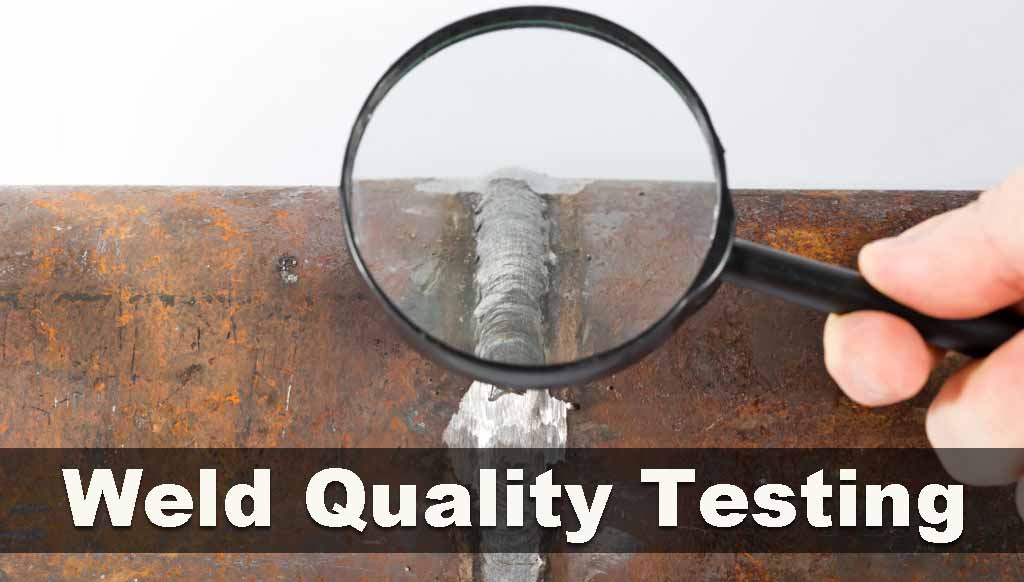The Significance of Thorough Welding Inspection in Industrial Applications
In the world of industrial applications, the significance of thorough welding assessment can not be overstated. It plays a crucial function in ensuring the architectural integrity and durability of bonded elements. Advanced non-destructive testing methods permit for the very early detection of prospective problems, such as splits and incomplete combination, which, if left unattended, can cause catastrophic failings. Adherence to stringent sector requirements not just guarantees high quality yet also develops customer self-confidence. As we explore the diverse advantages of persistent welding examinations, one must think about the more comprehensive implications on security, integrity, and cost-effectiveness in industrial operations.
Enhancing Architectural Integrity
When it comes to welding examination in commercial applications, enhancing architectural stability is critical. The primary objective of welding assessment is to ensure that the welds are capable of birthing the anticipated loads and stresses they will run into in service.
The importance of preserving structural integrity in bonded structures can not be overemphasized. Badly executed welds can cause devastating failings, leading to costly repair services, downtime, and even endangerment of human lives. Examiners play an essential role in the lifecycle of commercial components, supplying guarantee that the welding process provides the wanted strength and longevity.
Furthermore, progressed modern technologies, such as phased range ultrasonic screening and electronic radiography, offer improved capacities in spotting prospective weak points, enabling corrective procedures prior to concerns escalate. By prioritizing the stability of welds via meticulous evaluation, markets can make certain functional efficiency and extend the durability of their facilities.
Determining Welding Issues
Identifying welding problems is a vital element of making sure the safety and security and integrity of welded frameworks. These defects can endanger the integrity of the entire assembly and, if left unaddressed, may cause catastrophic failures. Typical welding problems include porosity, fractures, incomplete blend, and undercutting. Each of these flaws develops from certain reasons, such as incorrect welding methods, contamination, or poor warm control.

Skilled examiners make use of both visual assessment and progressed non-destructive testing (NDT) methods, such as ultrasonic or radiographic screening, to detect these flaws. The prompt recognition and rectification of welding problems are necessary to keep the structural honesty and long life of commercial components.
Ensuring Compliance Criteria
Conformity with well-known requirements, such as those offered by the American Welding Society (AWS) and the International Company for Standardization (ISO), makes sure that welds meet minimal safety and security and high quality requirements. These criteria include a broad range of criteria, consisting of material requirements, welding treatments, and qualification of welders.
Routine audits and inspections are necessary in verifying conformity. Inspectors need to have an extensive understanding of the pertinent requirements and be experienced at using different non-destructive screening (NDT) techniques to review weld quality. By making sure that welding techniques align with conformity criteria, companies alleviate the risk of non-conformity, which can cause lawful liabilities and security threats.
Furthermore, preserving conformity not just safeguards structural integrity however additionally enhances a company's track record in the sector. Stakeholders and clients are much more most likely to trust fund companies that consistently demonstrate a commitment to high quality and safety and security via strenuous compliance. Thus, guaranteeing compliance requirements is an essential part in the effective execution of welding in commercial applications.
Reducing Upkeep Expenses

The application of sophisticated non-destructive screening (NDT) techniques, consisting of ultrasonic, radiographic, and magnetic bit inspections, improves the ability to find subsurface defects without jeopardizing the my site structural stability of elements. By using these techniques, sectors can considerably expand the life span of their devices, reducing downtime and the connected economic concern of upkeep tasks.
Additionally, a durable welding inspection routine sustains the optimization of maintenance routines, changing from reactive to predictive maintenance approaches. This proactive technique not just curtails unforeseen failings yet also improves source appropriation, ensuring that maintenance efforts are concentrated and reliable. Inevitably, the investment in extensive welding assessment is countered by the significant savings realized with reduced upkeep needs, adding favorably to the total functional performance of commercial enterprises.
Improving Safety Steps
Welding assessment plays an important function have a peek here in this context, as it ensures that all joints and links meet rigorous security criteria. Comprehensive examinations assist determine defects such as splits, porosity, or incomplete blend that might compromise architectural stability.
Approaches like ultrasonic screening, radiographic testing, and magnetic bit assessment permit for detailed evaluation without damaging the framework. Applying a durable quality control system that includes regular training for welders and examiners makes sure adherence to developed safety and security criteria.
Lastly, fostering a culture of safety within their website the organization emphasizes the significance of complete welding examinations. Urging open interaction and cooperation amongst welders, engineers, and examiners adds to a shared dedication to safety and security quality. Welding Inspection Madison. In doing so, markets can secure their operations, safeguard personnel, and maintain public trust fund

Conclusion
Detailed welding inspection is indispensable in industrial applications, substantially improving structural stability and reliability. Inevitably, the persistent implementation of welding inspections plays a critical role in preserving functional efficiency and security in commercial setups.
As we explore the diverse advantages of attentive welding inspections, one should take into consideration the broader implications on security, integrity, and cost-effectiveness in commercial procedures.
The primary goal of welding assessment is to make certain that the welds are qualified of bearing the expected anxieties and lots they will certainly encounter in service. Effective welding evaluation plays an essential function in lessening these prices by making certain the honesty and long life of welds, therefore mitigating the danger of early failings.Complete welding examination is crucial in commercial applications, dramatically boosting architectural honesty and dependability. Eventually, the thorough execution of welding evaluations plays an essential role in maintaining functional performance and security in commercial settings.